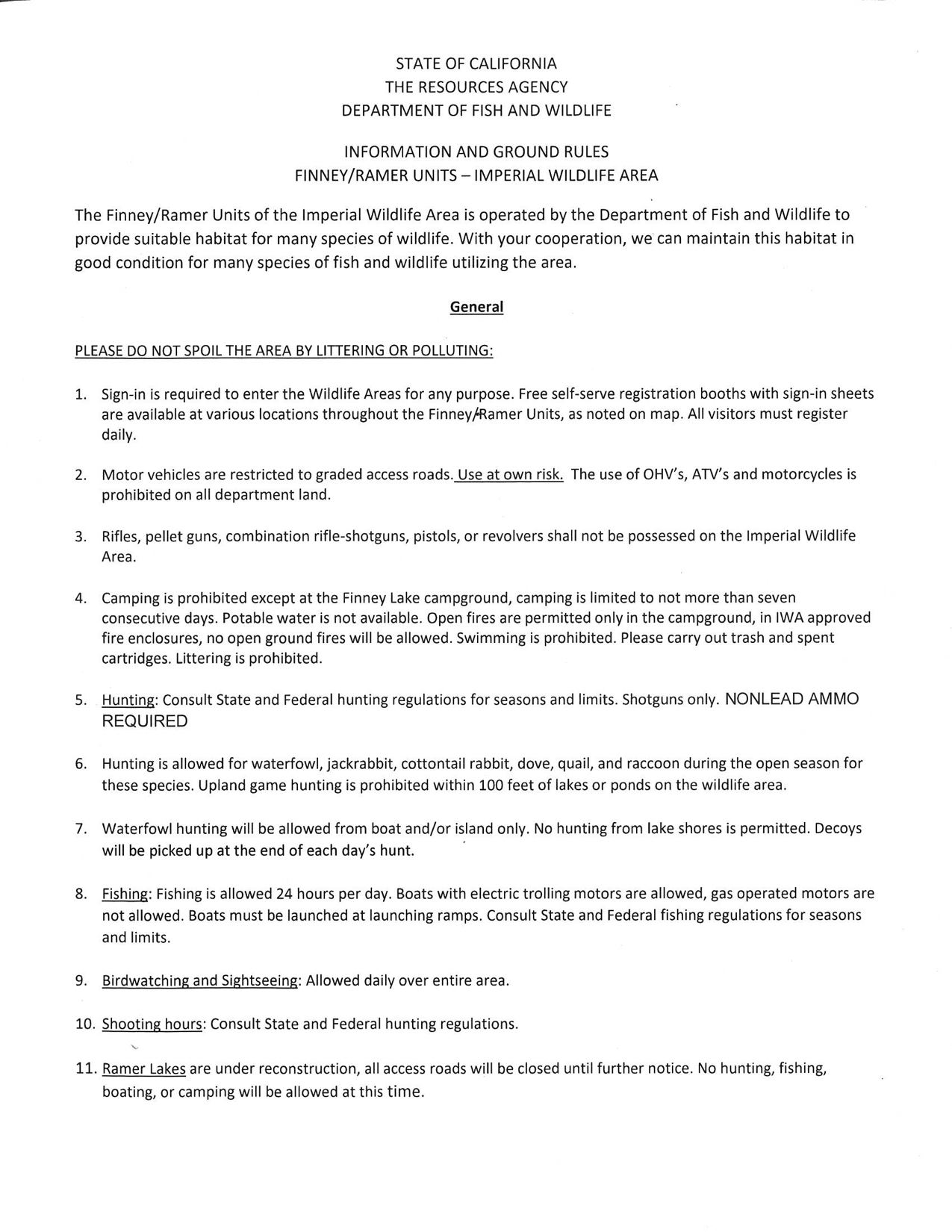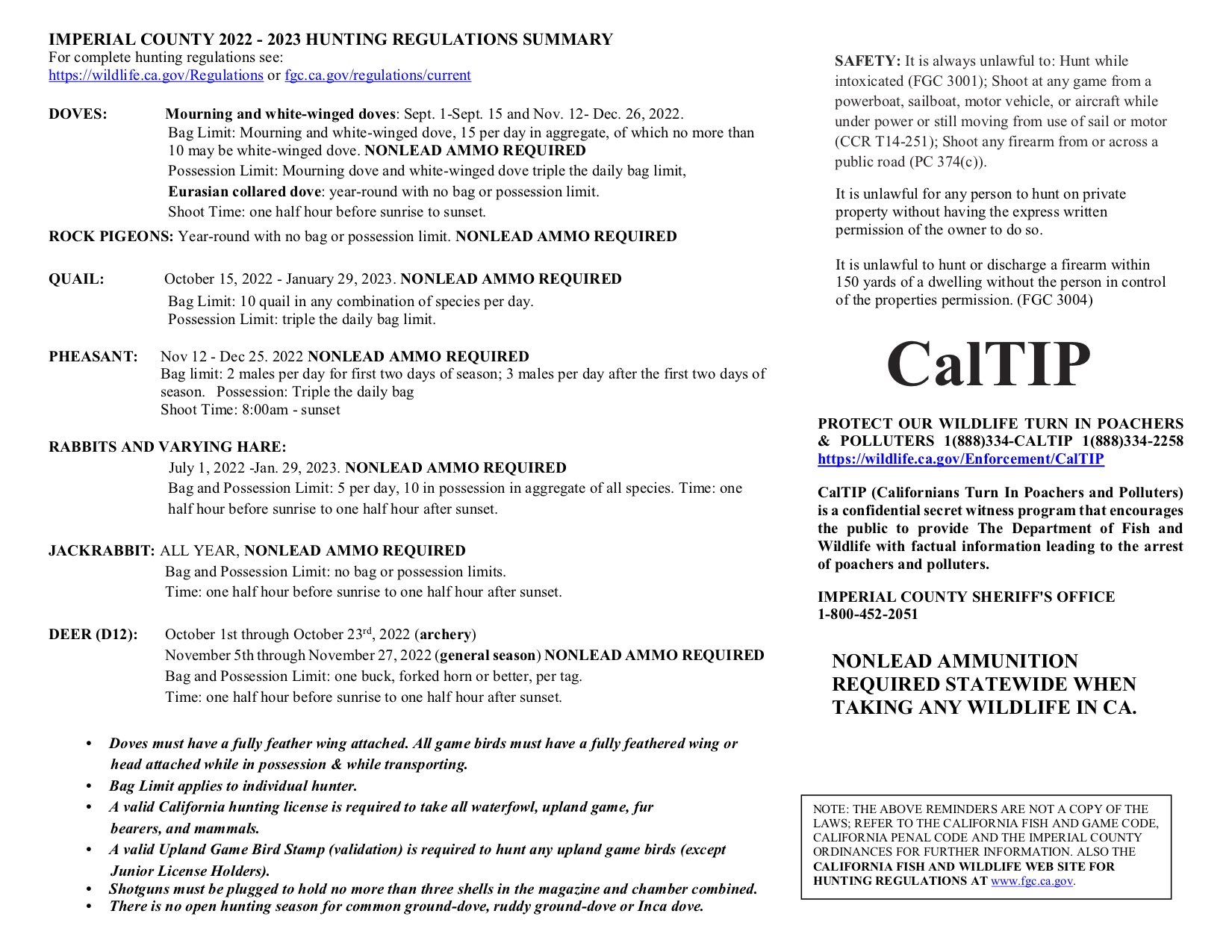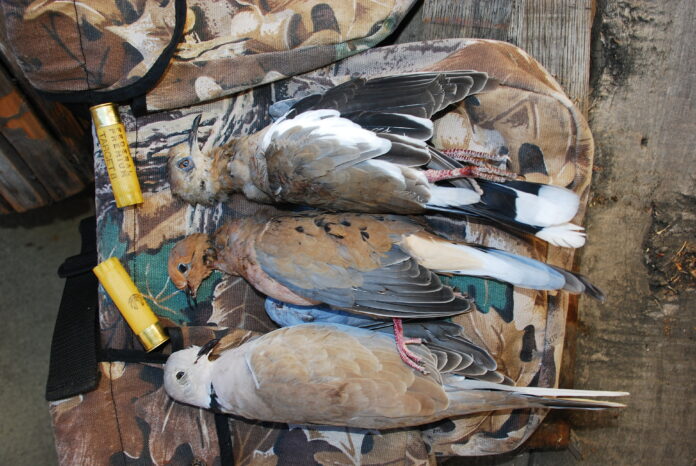
BY JIM NIEMIEC
WON Staff Writer
BLYTHE, CALIFORNIA – Monsoonal weather patterns lashed out on the southwestern part of the country and down into Mexico, dropping much needed heavy rains accompanied by massive flooding and very windy conditions. All of these weather-related issues don’t bode well for opening weekend of dove season that kicks off on Thursday, September 1.
Western Outdoor News checked in with a number of wildlife biologists and key hunting sources across the Western region to try and come up with some kind of game plan that might prove beneficial over opening week.
The following report was received by Rick Francis, Wildlife Habitat Supervisor 1 for the Palo Verde Wildlife Preserve (760-922-9189), located just a couple miles north of Blythe on the California side of the lower Colorado River. “Earlier this week, there was severe monsoonal activity in the Blythe area that dumped nearly two inches of rain in the area.
The good news is that there is still a fair amount of whitewing dove and a surprisingly number of mourning doves still around. Eurasian collared dove are sticking around as well, but are mostly found around farm and ranch houses and it’s hard to get any kind of count on them.
The Department of Fish and Wildlife has two areas that have been planted in wheat, at 2nd Ave. 120 acres, and at 6th Ave. 100 acres planted. All of the fields have been mowed in strips and are the only grain fields left in the valley. The doves are still here and even after three major monsoonal events hit this area in the last eight days. Hopefully, this area will dry up and keep the dove around for a few more weeks,” said Francis.
See the maps at the foot of this page for details.
Moving a little south, Ryan Woody, Cibola National Wildlife manager, told WON that there are lots of dove around the refuge… “literally thousands of them. However, the rain over the past couple of days has them really broken up. My hope is that they start to regroup before opening day. I believe the reason we have so many doves on the refuge (currently), is because of all the great amount of food that has been planted for dove.
It’s really nice to see they are still here despite all the rain we’ve had. I’m sure this is a direct correlation to the food that is here for them,” said Woody. (Editor’s note: Steel shot is mandatory for those hunting any part of the Cibola National Wildlife Area, but lead shot is OK for adjacent state and private ranch properties).

From Yuma, Arizona, Richard Sprague, owner of Sprague’s Sports (928-726-0022), sent in the following information for the lower part of the Colorado River system. “The monsoonal activity has been spotty and hunters will need to not rely on last year’s scouting. Reference to yumadovehunting.com and habitat fields for general locations would be a good start (to finding a place to hunt).
Also, highly recommended to all hunters is to bring binoculars for their scouting efforts. Any scouting before opening morning will be the key to hunter success and the closer to opening day the better. I do know there are some very impressive bird numbers still here,” said Sprague.
Sprague went on to add, “A reminder to get your license and bird stamp online before you arrive in Arizona at azfgd.gov. We have lots of 12 ga. and 20 ga. lead ammo in stock, along with a pretty good selection of other small gauge ammo. Big Breast XXXIII will be held at our retail store on Sept. 1 and 2, with over $2,000 in prizes sponsored by Federal Ammunition, Benelli USA and Budweiser.”
Courtney Shanley, Wildlife Manager III for the Arizona Game and Fish Department, sent in the following. “We definitely got hit pretty hard by monsoons and wind storms in Quartzsite, Cibola and Blythe the last few nights. It appears to me that bird numbers have decreased slightly in Cibola, but there is still a good concentration of birds sticking around for now. There is more of a significant decrease in bird numbers along the Oxbow Levee Road to the north of Cibola and out in the desert areas,” according to Shanley.
Shanley added, “It’s really hard to predict what the opener is going to bring, but I would say opening morning should offer up good shooting over the wheat fields in Cibola. Judging from the past, it will slow down after opening day, but there should be a steady amount of flights in the few days following the opener.”
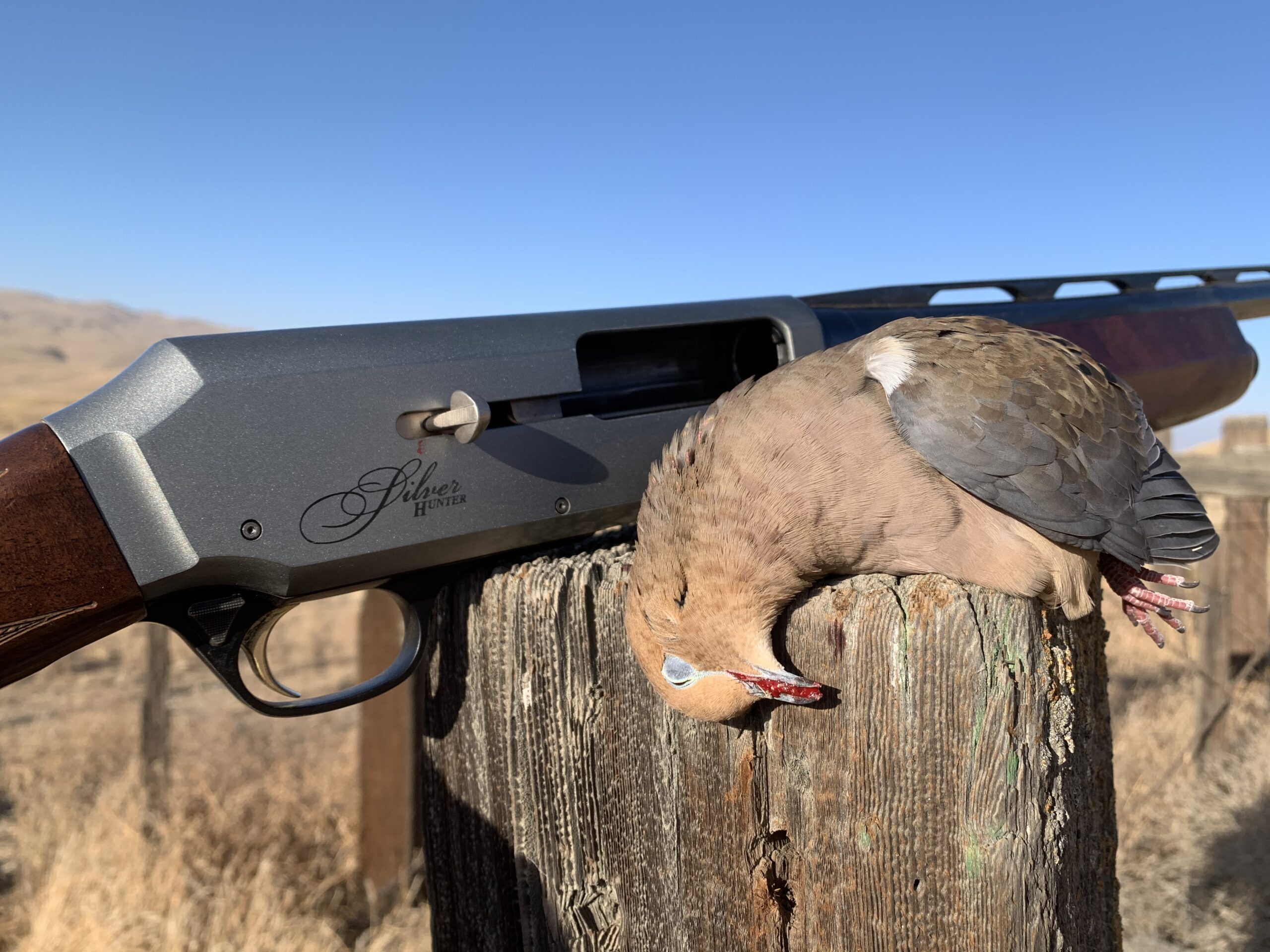
Closer to Southern California, WON was in contact with wildlife supervisors for both the Imperial Valley and Riverside County.
Cris Crecelius, Wildlife Habitat Supervisor II for Wister provided the following information on Wister, the Farm Fields and Finney-Ramer Unit. “IWA experienced some rain and wind last week. The staff has observed less than average numbers of scattered dove around the upland game plots.
Fields 115 and 312 have been planted with milo and the remaining fields at the Wister Unit and Finney-Ramer Unit were planted in wheat. As a reminder, Ramer Lake is closed to the public for repairs, but the adjacent “Game Farm” is open to hunting. Wister will be open for dove hunting from Sept. 11 to Sept. 15, while Finny-Ramer is open to hunting the entirety of dove season,” says Crecelius.
See the maps at the foot of this page for details.
A pretty good dove report was filed by Thomas Trakes, Wildlife Habitat Supervisor I, for the San Jacinto Wildlife Area (951-928-0580). “The SJWA will be open to dove hunting from Thursday, Sept. 1 through Sunday, Sept. 4 and we will have the entire refuge open with gates opening at 4 a.m. Some of the more productive spots will be the fields to the north of the dog training area, especially in the treed area and the wetlands habitat.
The dog training area will have 4 fields available to hunt and hunters will be able to obtain permits as they enter this area. It’s looking like dove hunting could be better than last year, but that’s pretty much dependent on future monsoonal storm activity in this part of Riverside County,” said Trakes.
Trakes then added, “We will have a permit station on Bridge Street where hunters can check in, but fields on both sides of this popular area were not planted this winter. Also, due partly to the drought, winter crops were not that good either. There is a lot of water moving through the refuge as we start to flood duck ponds.”
Click here for more top-rated public fields for the 2022 Dove season opener.
See below for maps and a full list of rules and regulations for Upland Game Fields in Imperial County / Wister Unit and Finney/Ramer Unit / Imperial Wildlife area dove hunters.
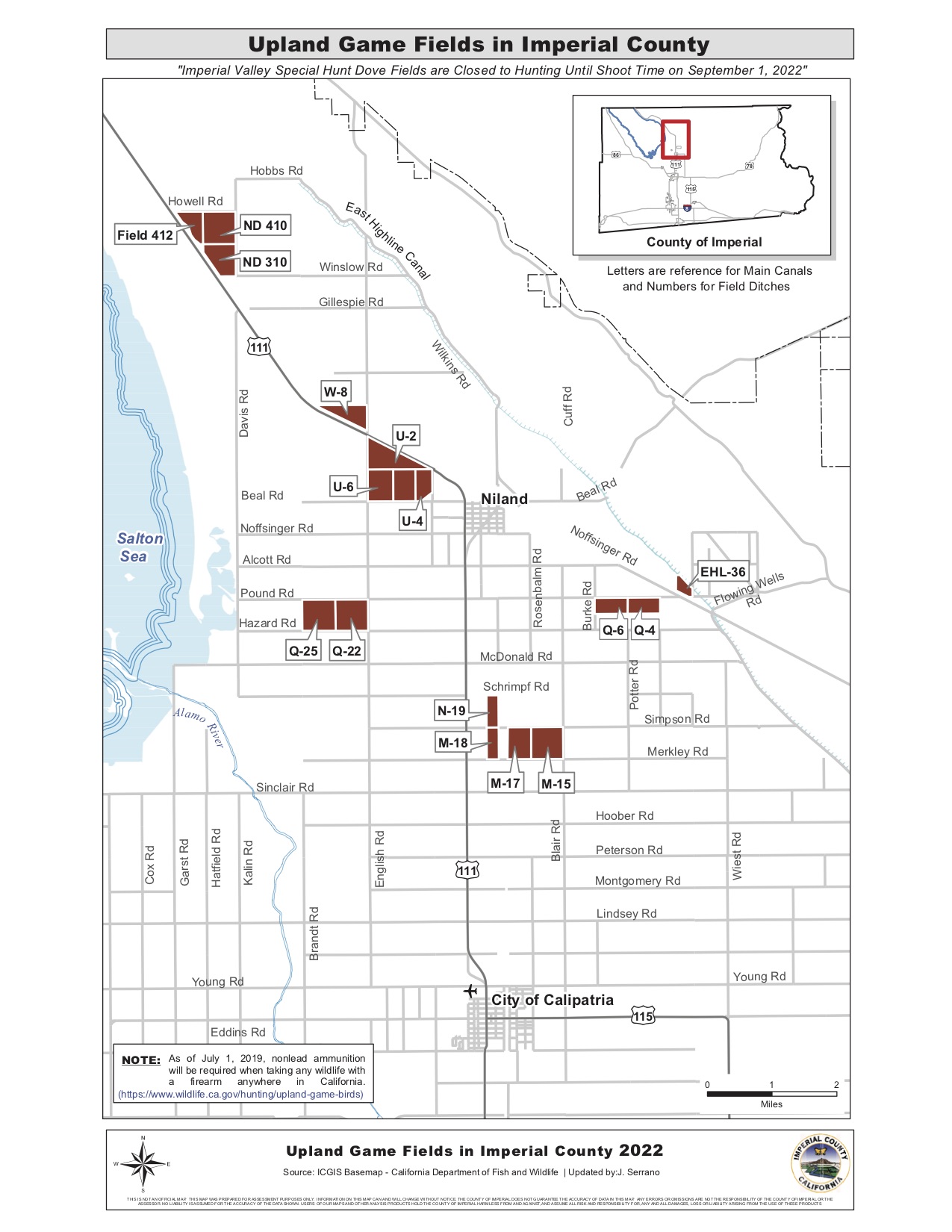
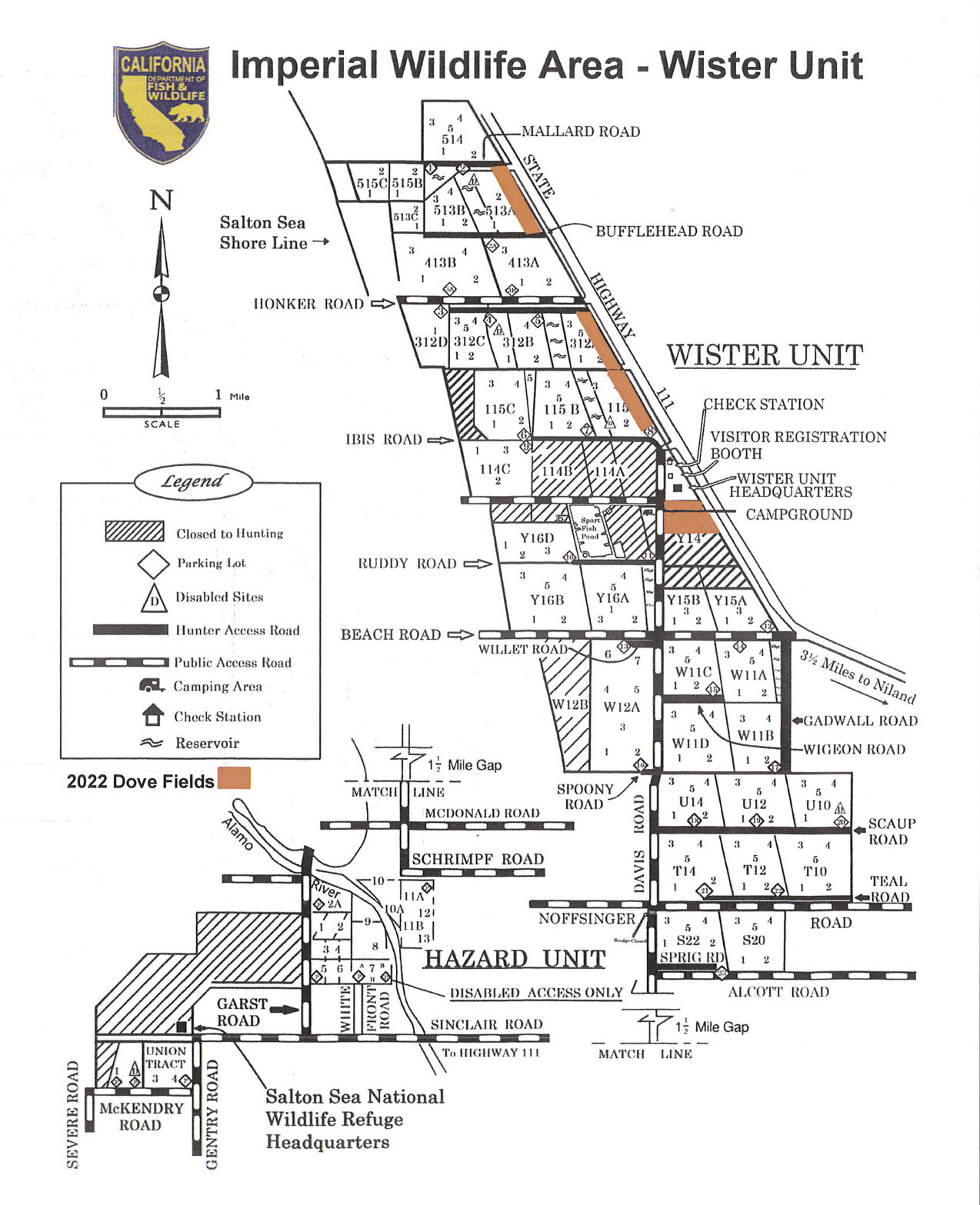
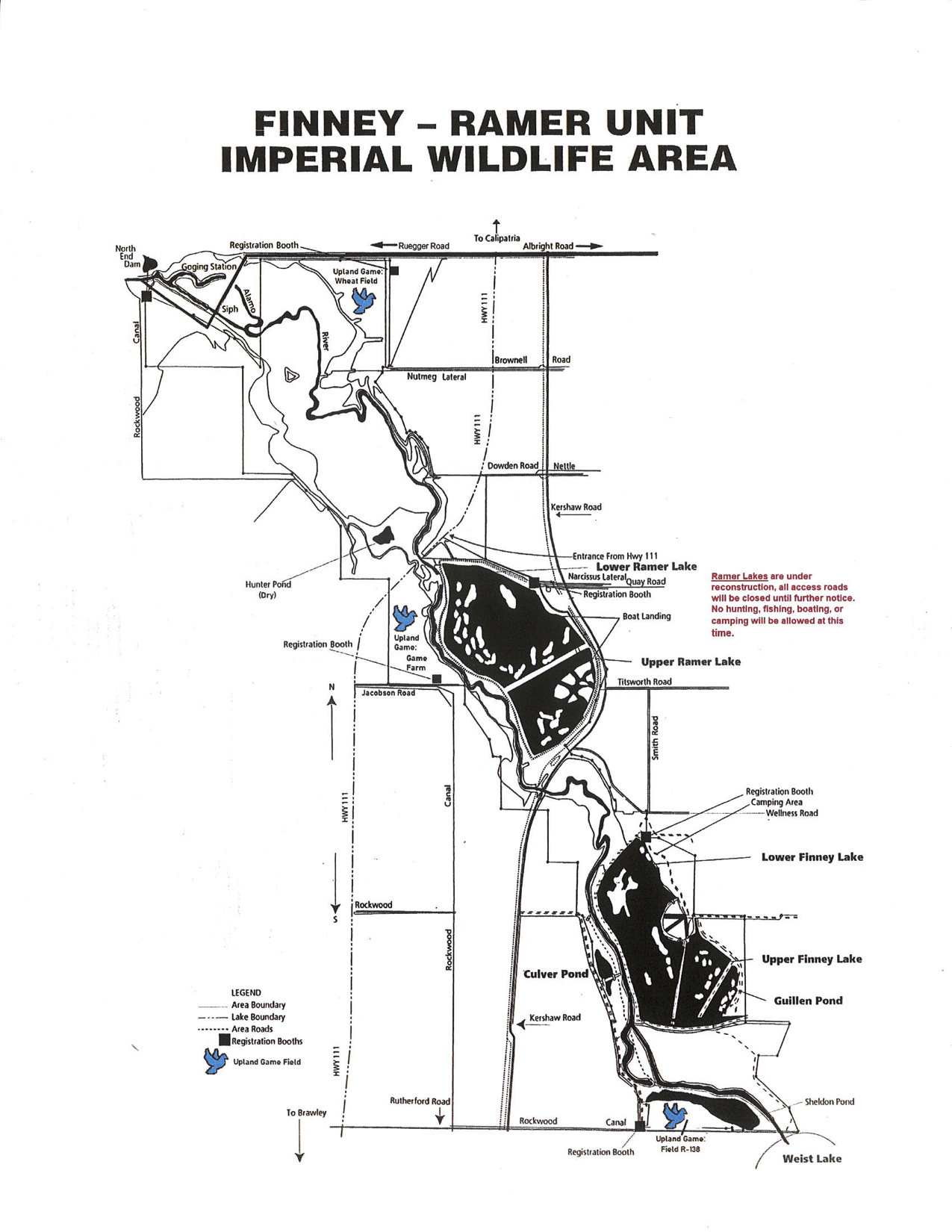
STATE OF CALIFORNIA DEPARTMENT FISH AND WILDLIFE IMPERIAL WILDLIFE AREA – WISTER UNIT – AREA REGULATIONS
It is your responsibility as a user of the Imperial Wildlife Area to know all the rules and regulations covering the activity you wish to participate in.
DOVES: Mourning and white-winged doves: the Imperial Wildlife Area-Wister Unit is only open for the first half of dove season – Sept. 1-Sept. 15, 2022.
Bag Limit: Mourning and white-winged dove, 15 per day in aggregate, of which no more than 10 may be white-winged dove. NON-LEAD AMMO REQUIRED
Possession Limit: Mourning dove and white-winged dove triple the daily bag limit,
Eurasian collared dove: no bag or possession limit.
Shoot Time: one half hour before sunrise to sunset.
All dove hunters must sign in and out of the wildlife area.
THESE RULES AND REGULATIONS ARE SPECIFIC TO THIS WILDLIFE AREA.
- Doves must have a fully feather wing attached. All game birds must have a fully feathered wing or head attached while in possession & while transporting.
- Bag Limit applies to individual hunter.
- A valid California hunting license is required to take all waterfowl, upland game, fur bearers, and mammals.
- A valid Upland Game Bird Stamp (validation) is required to hunt any upland game birds (except Junior License Holders).
- Shotguns must be plugged to hold no more than three shells in the magazine and chamber combined.
- There is no open hunting season for common ground-dove, ruddy ground-dove or Inca dove.
